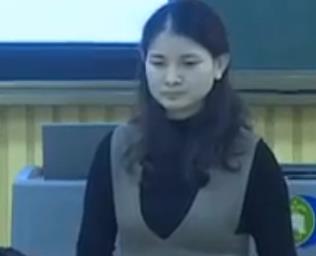視頻簡介:

視頻標(biāo)簽:the clouds
所屬欄目:高中英語優(yōu)質(zhì)課視頻
視頻課題:Book2 Unit 2 Reading and Thinking A day in the clouds東營
本視頻配套資料的教學(xué)設(shè)計(jì)、課件 /課堂實(shí)錄及教案下載可聯(lián)本站系客服
Book2 Unit 2 Reading and Thinking A day in the clouds東營市第一中學(xué)教學(xué)設(shè)計(jì)
Lesson plan for A DAY IN THE CLOUDS
Teaching Aims:
1. To learn about the present situation of the Tibetan antelope
2.To know the bad times of the Tibetan antelope and what people have done to protect them from distinction
3. To think how we can change our way of life and live in harmony with wildlife
Teaching Procedures:
Step1: Lead-in
1. Enjoy pictures of some endangered animals and ask the students:
What are they?
Step 2: Predict and scan
Get the students to look at the picture and title to predict:
-
Who spent one day in the clouds?
-
What does “in the clouds” refer to?
-
Why did they go there ?
Then let the students read the passage quickly and find out
whether their predictions are correct. After that, ask the students:
-
Can you use one sentence to summarize the main idea of the
passage?
-
What’s the writing style of the passage?
Step 3: Read and Comprehend
Paragraphs 1-3 what did the writer see and feel
-
Let the students read para1-para3 carefully and answer:
1). What did the writer saw on the plains of Tibet ?
2). How did the writer feel ?
From what the writer saw, let the students sum up the antelopes’ special natural habitats, attractive appearance and being in harmony with nature. Why did the writer feel happy at first and worried later ?
Paragraphs 4-6: what did the writer hear
-
Ask the students to read Para.4 to Para.6 and ask the students
what happened to the antelopes according to the timeline.
1). Why did the population of the Tibetan antelope drop during the
1980s and 1990s?
2). Why does the antelope population have recovered?
3). what measures were taken?
-
After dealing with these three questions, let the students watch a short video about the past situation of the Tibetan antelopes. Then, ask the students:
Why did the government continue the protection programmes?
-
Introduce the literal and implied meaning to the students and let
the students identify them by giving the students some
sentences.
1). Which sentences have Literal meaning? Which sentences have
Implied meaning?
2). Read the sentences and choose the correct answer:
“To Zhaxi, the land is sacred and protecting the wildlife is a way of life. “We’re not trying to save the animals,” he says.
“Actually, we’re trying to save ourselves.”
Which one has the implied meaning in the passage?
-
We’re not only trying to save the animals but to save ourselves.
-
To protect animals is to protect ourselves.
From all these, get the students to know: we must change our
way of life and learn to exist in harmony with nature.
Paragraph 7: what did the writer reflect
Ask the students to read Para.7 and find out the answer to the
questions:
-
But how can we stop being a threat to wildlife?
-
What do you think we should do to change our way of life to protect the endangered animals and live in harmony with nature?
Step 4 Discuss and Share
What do you think we should do to change our way of life to
protect the endangered animals and live in harmony with nature?
Step 5 Homework
Write a speech to call on people to protect the endangered animals and our planet and share your speech with others next
class.
視頻來源:優(yōu)質(zhì)課網(wǎng) www.jixiangsibao.com
| -----更多視頻請(qǐng)?jiān)诒卷撁骓敳克阉鳈谳斎搿皌he clouds”其中的單個(gè)詞或詞組,搜索以字?jǐn)?shù)為3-6之間的關(guān)鍵詞為宜,切記!注意不要輸入“科目或年級(jí)等文字”。本視頻標(biāo)題為“Book2 Unit 2 Reading and Thinking A day in the clouds東營”,所屬分類為“高中英語優(yōu)質(zhì)課視頻”,如果喜歡或者認(rèn)為本視頻“Book2 Unit 2 Reading and Thinking A day in the clouds東營”很給力,您可以一鍵點(diǎn)擊視頻下方的百度分享按鈕,以分享給更多的人觀看。優(yōu)質(zhì)課網(wǎng) 的成長和發(fā)展,離不開您的支持,感謝您的關(guān)注和支持!有問題請(qǐng)【點(diǎn)此聯(lián)系客服QQ:9899267】 ----- |
